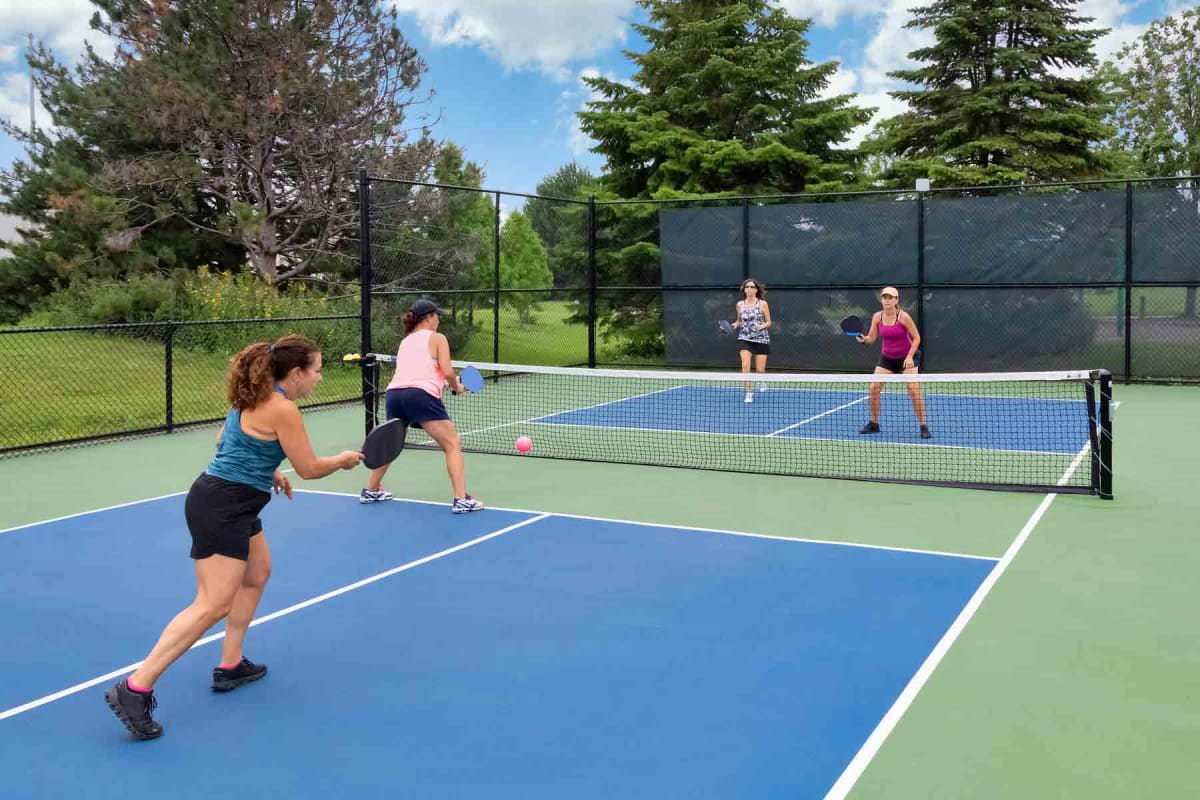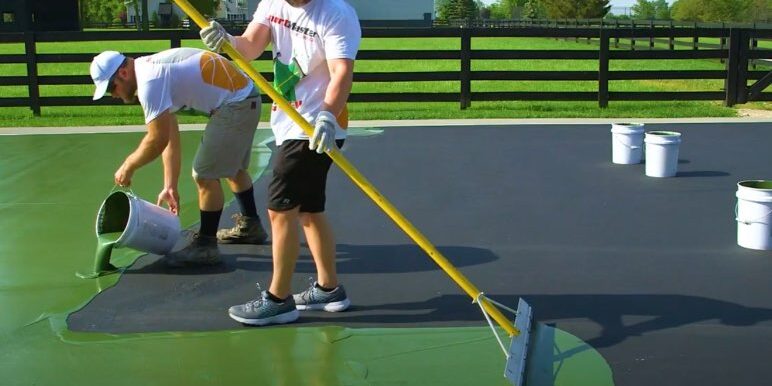Building a Pickleball Court Construction-- Professional Construction for Quality Play
Wiki Article
Lasting Practices in Pickleball Court Construction You Must Know
As the popularity of pickleball remains to climb, so too does the need for lasting methods in court building. This approach not just addresses environmental worries but likewise enhances the longevity and capability of the courts. From selecting environmentally friendly materials to carrying out effective drainage and energy-saving illumination solutions, there are countless methods to take into consideration. The influence of these methods prolongs far past the court itself. Comprehending exactly how each aspect adds to a much more sustainable future welcomes further expedition right into the detailed equilibrium in between entertainment growth and ecological stewardship.Choosing Eco-Friendly Products
Choosing eco-friendly products is a vital action in the building and construction of lasting pickleball courts. The choice of lasting products not only lessens ecological impact yet additionally enhances the longevity and performance of the court. Trick products consist of recycled rubber for the surface, which uses excellent toughness and shock absorption while diverting waste from garbage dumps.Furthermore, using in your area sourced materials minimizes transport exhausts and supports regional economies. Pickleball court construction. As an example, utilizing native hardwoods for fencing and seating can offer a lasting visual while making sure strength against the components.
Integrating absorptive products for court structures can better contribute to sustainability by enabling all-natural water drainage and decreasing runoff. These choices not only protect local environments however also advertise much healthier play settings.
Reliable Drain Solutions
While the choice of eco-friendly products is important, applying reliable water drainage remedies is similarly vital for keeping lasting pickleball courts. Proper drain not only protects the court surface from water damage but likewise decreases disintegration and runoff, promoting ecological integrity.Effective drain systems can consist of absorptive paving, which allows water to infiltrate the ground instead of pooling on the surface area. This decreases the likelihood of standing water, which can result in mold and various other maintenance issues. Additionally, incorporating strategically put drainage networks and swales can direct excess water far from the court area, ensuring a completely dry playing surface and stopping soil disintegration.
Using indigenous plants in the landscape design around the courts can better enhance drainage by soaking up excess water and decreasing drainage. These plants require less watering and advertise biodiversity, aligning with lasting techniques.
In addition, it is crucial to consistently maintain the drain system to ensure its long-term efficiency. This includes clearing up debris and monitoring for obstructions. By prioritizing reliable water drainage services, pickleball court producers can dramatically add to the sustainability and long life of the facility, ultimately profiting both gamers and the setting.
Energy-Efficient Lighting Options
As the demand for pickleball remains to grow, integrating energy-efficient lights options right into court style has ended up being significantly vital for sustainability. Standard lights systems frequently consume too much power, contributing to higher functional costs and environmental influence. As a result, embracing modern-day, energy-efficient technologies is necessary for both brand-new building and constructions and improvements.LED (Light Emitting Diode) lights attracts attention as a premier choice as a result of its long life and energy financial savings (Pickleball court construction). Contrasted to standard lights, LEDs make use of roughly 75% less energy and can last as much as 25 times longer, dramatically reducing maintenance prices. In addition, the directional nature of LED illumination reduces light pollution, making sure that lighting is concentrated on the court as opposed to bordering areas.

Lasting Surface Area Alternatives
Exploring sustainable surface area options for pickleball courts has acquired traction amongst contractors and gamers alike. The emphasis on environmentally friendly products not just lines up with the growing ecological understanding but likewise enhances the efficiency and toughness of the courts.This material provides excellent shock absorption, decreasing the risk of injuries for players while promoting sustainability. These tiles are easy to set up and change, and their flexibility permits for different court configurations.
Natural lawn courts are likewise becoming a lasting choice, advertising biodiversity and reducing the warmth island effect. They require routine upkeep and water, which may not line up with all sustainability objectives.

Water Preservation Methods

One more reliable technique includes the installment of rain harvesting systems. These systems collect and save rainwater for use in maintaining court surface areas and landscape design. This strategy not only saves drinkable water but additionally minimizes dependence on community sources.
Moreover, employing drought-resistant landscaping around the courts is vital. Indigenous plants call for much less water and are much better adjusted to neighborhood environment problems, thus reducing total water consumption. In addition, utilizing efficient watering systems, such as drip watering, makes certain that water is supplied straight to plant origins, decreasing evaporation and waste.
Final Thought
Including lasting practices in pickleball court construction considerably adds to environmental conservation and resource effectiveness. Using environmentally friendly materials, applying effective drain solutions, and embracing energy-efficient lighting alternatives can significantly reduce ecological effect. Exploring lasting surface area alternatives and using water conservation strategies boost the general sustainability of these entertainment facilities. By focusing on these techniques, about his the building and construction of Look At This pickleball courts can line up with broader environmental goals while advertising durability and functionality within neighborhoods.As the popularity of pickleball continues to climb, so too does the requirement for sustainable methods in court construction.Selecting environmentally friendly materials is an essential action in the building of sustainable pickleball courts. By focusing on energy-efficient illumination choices, pickleball court builders can contribute to a much more sustainable future while fulfilling the demands of stakeholders and players alike.Including lasting surface area options not only enhances the efficiency of pickleball courts but also leads the method for carrying out effective water conservation strategies.Incorporating lasting methods in pickleball court building and construction substantially contributes to ecological conservation and source performance.
Report this wiki page